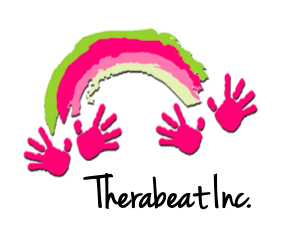In the first month of my music therapy internship with Therabeat, Inc. I have had the opportunity to work with a wide variety of people of different ages and diagnoses. While every session is unique, I have seen one very important commonality that is always present: positive reinforcement. Positive reinforcement is an important and effective behavior management technique that we use in every session. The definition of positive reinforcement is “the contingent presentation of a stimulus following a response that increases the future probability of that response” (Madsen & Madsen, 285). The idea behind positive reinforcement is that we reward positive behaviors in the hopes of increasing the likelihood that they will repeat.
Behavior management can be a difficult art to master, and developing a positive approach to behavior management can be an even more challenging task. Yet, developing and using a positive approach to behavior management is an essential part of being a music therapist. In a setting where you are working with clients toward meeting specific goals and objectives, knowing how to control and shape the behavior of your clients in a positive way is crucial. Anyone who works with children- teachers, parents, therapists- could benefit from a well-stocked file of knowledge on this topic.
Behavior modification is based on cause-effect relationships. What consequence does a child associate with a specific behavior? Therefore, positive reinforcement is all about pairing positive “consequences” with desired behaviors. Earlier, the definition of positive reinforcement mentioned the presentation of a “stimulus”; this stimulus could be any kind of reward such as verbal praise, a smile or nod, or even a token such as a sticker or lollipop. (In music therapy, we like to use music as a reward!).
Choosing which kind of reward to use will always depend on the individual. “Reinforcers must be chosen with specific individuals in mind...something that functions as a reinforcer for one student may not necessarily function for another” (Madsen & Madsen, 285). Of course, we always want to make behavior modification as easy and manageable for ourselves as possible; so, if mere verbal praise is enough to motivate a child, then stick with that! However, some children do not respond as well to verbal praise; for some children, a pat on the back is not as motivating as a trip to the prize box. It is important to think about the individual when considering your choice of reinforcement. Figure out what motivates the child and use what works best!
Another important aspect of behavior management to consider is your schedule of reinforcement. When you are first beginning to target a certain behavior, the more praise the better. “Initially, it is far better to give too much reward than not enough” (Madsen & Madsen, 57). During this time, children are functioning on external motivation; their behavior is motivated by the reward they expect to follow it. However, the goal is to encourage intrinsic motivation to take the place of external motivation as the primary reason for a behavior. So, how do we achieve this transition from external to intrinsic motivation? Considering your schedule of reinforcement is the best place to start. While at first, we may reward a behavior every single time it happens, we eventually want to start thinning our frequency of reinforcement. As we begin the process of thinning, our schedule of reinforcement will change from a fixed schedule to a variable one. This means that rather than presenting a reward every time a behavior is displayed, we only present the reward sometimes. By giving rewards randomly, we are teaching the child to “go for longer and longer periods of time before receiving payoff” ( Madsen & Madsen 73). When you have reached a variable schedule of reinforcement, a naturally occurring reinforcer will eventually take the place of the need for an external reward. When this happens, the child has become self-motivated and has transitioned from an external motivation mindset to an intrinsic motivation mindset.
Another useful tip for developing an effective positive behavior management strategy is to make your praise as specific and individualized as possible. For example, consider a child who shakes her maracas up high after being asked to do so only once by the music therapist. Rather than saying “good job”, the music therapist could say “Sally, I love how you followed my directions so quickly!”. That way, the child knows exactly what she did correctly and exactly what she should continue to do in the future.
Positive reinforcement can be a very effective tool in group settings as well. Consider a preschool classroom that has been handed egg shakers. Many of the kids are shaking loudly and are not waiting for directions, while a few children are waiting patiently with their egg shakers on the floor. Rather than calling out the children who are misbehaving, the music therapist could say, “I love how John and Sam are waiting patiently with their egg shakers on the ground; they are ready to be good listeners.” By doing this, the music therapist calls attention to the positive behaviors rather than the negative ones, hopefully encouraging the other students to change their behavior in the process.
As you can see, developing a positive and effective approach to behavior modification is no easy task. It requires practice, hard work, and consistency. However, putting in the time and effort is well worth it when we begin to see positive, functional changes in the behavior of our children. It is important to remember that every child is different and every situation is unique, but maintaining positivity in all things will benefit not only the child but us as well!
-Alaina Brommer, Music Therapy Intern
References: Madsen, C. K., & Madsen, C. H. (2016). Teaching/discipline: a positive approach for educational development (4th ed.). Raleigh, NC: Contemporary Publishing Company of Raleigh, Inc.





